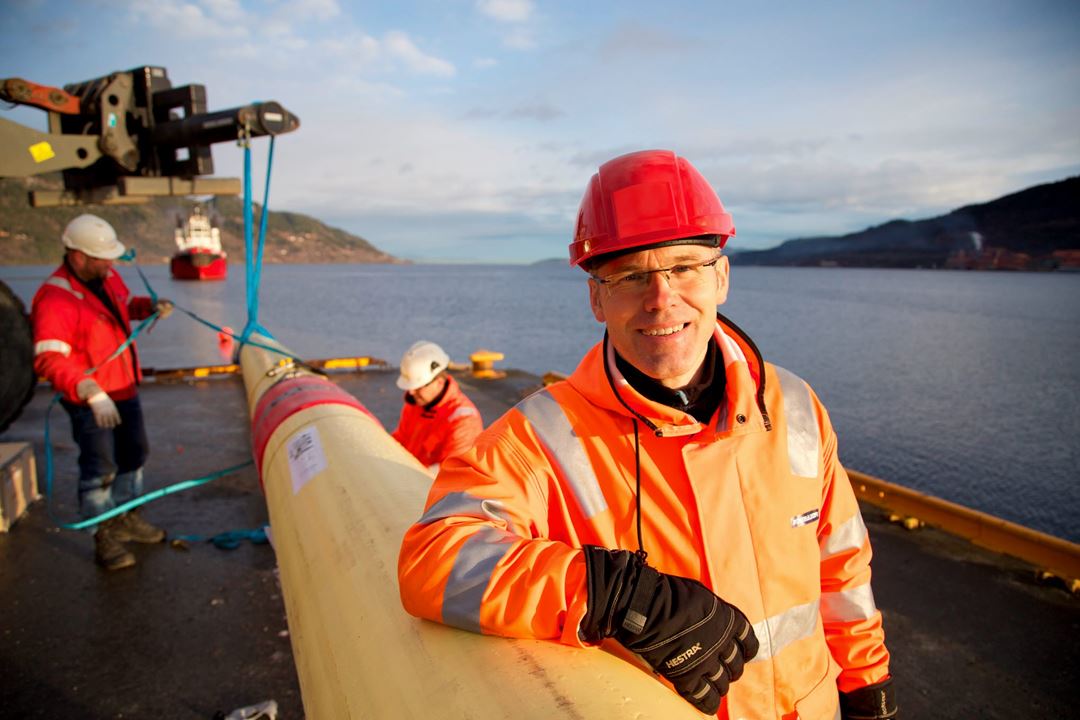By Åse Dragland
The SmartPipe project has been ongoing since 2006 when the Research Council of Norway and a group of oil companies provided about 25 million to fund the research programme.
As oil production moves into increasingly deeper waters and more environmentally-sensitive areas, the pipelines carrying the hot well stream to the production platform must be in good condition. The aim of the SmartPipe project is real-time monitoring.
Crammed with electronics
Sensor belts have been fitted to the new pipelines at 24-metre intervals. There is a thick insulating jacket containing polypropylene around the outside of the steel pipe sections carrying the well stream. It is here that the electronics are concealed, and along which data are transmitted wirelessly either onshore or to a platform.
SINTEF researchers have developed an entirely new concept for transmitting data via a belt containing a series of sensors designed to measure pipeline wall thickness, tension, temperature, vibration and acceleration. If this succeeds, Norway will become the first country in the world with a concept that has both domestic and global potential.
Many components have to work
At Orkanger, 250 metres of pipe will be deployed in the sea for testing. This is just a small fraction of the length of a real oil pipeline, many of which are more than 100 kilometres long.
However, it's long enough for the researchers to find out what they're looking for. If the electronics package can survive being underwater, will the pipeline behave as it should after being through a production process involving temperatures as high as 200 degrees? And will the sensors succeed in transmitting data to personnel onshore?
A consortium of companies from the Trondheim area is planning to commercialize the concept. Siemens is responsible for the equipment which takes care of transmission from the pipeline to the oil companies. Bredero Shaw in Orkanger manufactures the pipelines and will install the equipment. Force Technology interprets the data and Norbitech in Røros has manufactured the electronics. The company ebm-Papst in Oslo has supplied the system's battery packs.
From rules-based to continuous monitoring
"Today, all pipeline status monitoring is based on regulations" says Project Manager Ole Øystein Knudsen at SINTEF. "Everything is based on safety guidelines and five-yearly inspections. The new self-monitoring pipelines provide us with a continuous data stream and will allow us to maintain the condition of a pipeline in an entirely different way, enabling us to respond to problems at an early stage", he says.
One example Knudsen cites is the monitoring of small concentrations of anti-corrosion additives. The new system makes it possible to detect errors in the additives at an early stage and make corrections.
"Another important issue is the monitoring of unsupported sections along a pipeline", says Knudsen. "These sections may start to swing and incur fatigue fractures due to the undulating sea floor, but the new pipes will enable us to prevent this situation", he says.
Facts:
- SmartPipe is a six-year (2006-2013) research programme with the objective of combining materials degradation models and analytical tools using data derived from sensors fitted to oil and gas pipelines in order to monitor technical status in real time.
- Partners: SINTEF, Force Technology, Bredero Shaw, ebm-Papst, Siemens, Technip, Eni, ConocoPhilips, Petrobras and Total.

